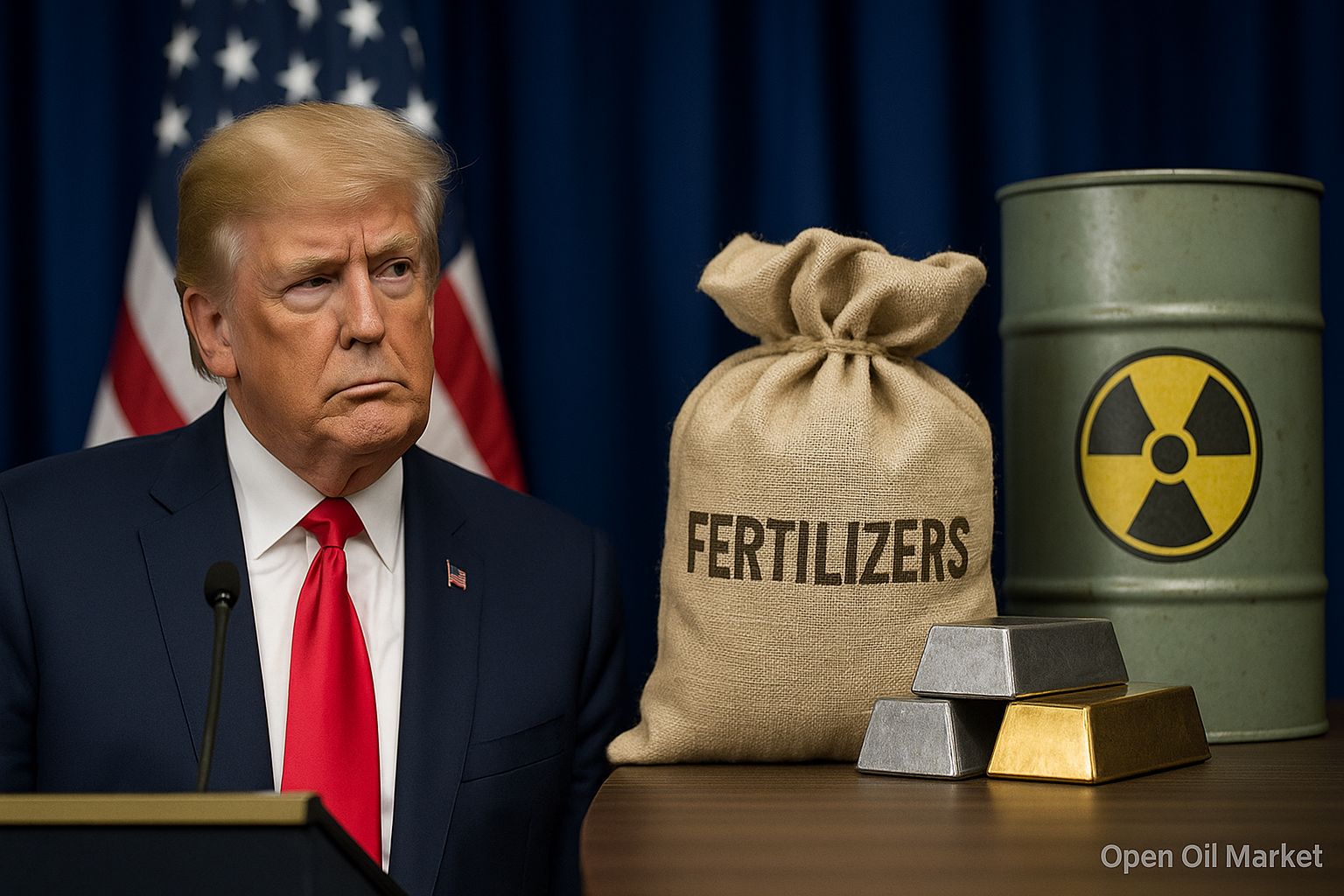
Overview of Major Corporate Holders of Ethereum as of August 6, 2025. Who is Accumulating ETH and Why — BitMine, SharpLink, Coinbase, and Others. Analyzing the Impact on the Crypto Market and Investors.
Institutional investors are strengthening their presence in the Ethereum (ETH) market. According to data from CryptoRank.io as of August 6, 2025, the ten largest holders of ETH among companies and funds jointly control over 2.5 million ETH (more than 2% of the total supply of the coin). These crypto companies and organizations — ranging from mining firms to non-profit funds — are actively building their Ethereum reserves. New players such as BitMine and SharpLink Gaming have emerged as the frontrunners, accumulating vast supplies of ETH in just a few short weeks, even surpassing the Ethereum Foundation. Let’s take a closer look at the top 10 holders of ETH and analyze how such large reserves affect Ethereum’s price, market sentiment, and institutional investor interest.
Top 10 Ethereum Holders as of 06.08.2025:
- BitMine — 833.1 thousand ETH
- SharpLink Gaming — 438.2 thousand ETH
- The Ether Machine — 345.4 thousand ETH
- Ethereum Foundation — 232.6 thousand ETH
- PulseChain SAC — 166.3 thousand ETH
- Coinbase — 136.8 thousand ETH
- Bit Digital — 120.3 thousand ETH
- Mantle — 101.9 thousand ETH
- Golem Foundation — 100.6 thousand ETH
- BTCS Inc. — 70 thousand ETH
BitMine: The Largest Holder of ETH
BitMine Immersion Technologies (NYSE American: BMNR) is an American public blockchain company that initially focused on mining but launched an unprecedentedly aggressive strategy to accumulate ETH in the summer of 2025. In just 35 days, BitMine acquired approximately 833 thousand ETH, becoming the largest institutional holder of Ethereum globally. The company aims to concentrate up to 5% of the total ETH supply and has attracted the attention of notable investors, including legendary financier Bill Miller III, impressed by the speed of its accumulation. With purchases of ETH totaling around $3 billion, BitMine surpassed SharpLink Gaming and topped the rankings of corporate ETH holders.
SharpLink Gaming: Betting on Ethereum as a Reserve
SharpLink Gaming (NASDAQ: SBET) is an American online gaming and sports technology company that has surprisingly become the second-largest corporate holder of ETH. In 2025, SharpLink adopted a strategy to use Ethereum as its primary treasury asset and by early August had accumulated around 438 thousand ETH, financing purchases through a new stock issuance (via an ATM program). The company is methodically increasing its digital ETH reserves, attracting market attention — even a former top executive from BlackRock joined its leadership to develop its crypto strategy. As a result, SharpLink has surpassed the Ethereum Foundation in reserves and has established itself among the leaders of the crypto market.
The Ether Machine: A New Major Investor in ETH
The Ether Machine is a recently established institutional structure focused on long-term investments in Ethereum. Formed in 2025 through the merger of the Ether Reserve fund with the public firm Dynamix, the company plans to go public on NASDAQ under the ticker ETHM. In a short time, The Ether Machine has accumulated around 345 thousand ETH, becoming the third-largest holder and surpassing the Ethereum Foundation in reserves. The company also maintains a significant reserve (hundreds of millions of dollars) for further purchases, indicating its founders' confidence in Ethereum’s long-term potential.
Funds: Ethereum Foundation and Golem Foundation
Ethereum Foundation is a non-profit fund overseeing the development of the Ethereum ecosystem. Historically, it has held large ETH reserves since the network's launch, and as of August 2025, the foundation holds about 232.6 thousand ETH. Although the Ethereum Foundation's share of the total ETH supply is decreasing amid aggressive acquisitions by commercial companies, these assets remain an important financial resource for further protocol development. The foundation regularly spends part of its ETH reserves to fund developers and ecosystem projects, supporting Ethereum's long-term growth.
Golem Foundation is an industry fund behind the Golem project (a decentralized computing platform). Golem attracted a significant volume of ETH during its ICO in 2016 and still has approximately 100.6 thousand ETH in its reserves. Although the Golem project has become less visible to the wider public in recent years, its fund remains one of the largest holders of Ethereum, demonstrating that organizations from the ICO era still play a significant role in the crypto market.
Crypto Projects with ETH Treasuries: PulseChain and Mantle
PulseChain SAC is a crypto project that launched its own blockchain, PulseChain (a fork of Ethereum), under the guidance of renowned blockchain entrepreneur Richard Hart. In 2021, the project conducted an unusual fundraising campaign ("sacrifice"), during which participants sent ETH to a specific address in exchange for tokens of the new network. As a result, this address related to PulseChain accumulated about 166.3 thousand ETH. Practically, this pool of ETH serves as the treasury for the PulseChain ecosystem, although it is not formally controlled by a traditional company or fund. The presence of such a large volume of "frozen" ETH reduces its available supply on the market and reflects the crypto community's trust in the PulseChain project.
Mantle (BitDAO) is a decentralized autonomous organization (DAO) developing a new layer 2 blockchain called Mantle Network, evolved from the BitDAO community. For a long time, the BitDAO community accumulated various crypto assets, and its successor Mantle now holds a treasury of approximately 101.9 thousand ETH, intended to support its ecosystem. This example shows that not only public companies but also blockchain projects in the DAO format can concentrate substantial reserves of Ethereum by reinvesting capital raised from the community into developing their infrastructure.
Public Crypto Companies: Coinbase, Bit Digital, and BTCS
Coinbase — the largest American cryptocurrency exchange (NASDAQ: COIN) — is also among the top holders of ETH. Coinbase holds approximately 136.8 thousand ETH, owned by the company itself (these are not client funds). The exchange, having earned significant amounts during the cryptocurrency boom, partly stores its capital in Ethereum and actively participates in its staking. Coinbase’s presence on the list of largest ETH reserves underscores the trust that major market players have in Ethereum as a strategic asset.
Mining and infrastructure companies are also looking to utilize Ethereum as a reserve asset. For example, Bit Digital (NASDAQ: BTBT), one of the major public Bitcoin mining companies, shifted its strategy between 2023 and 2025 and moved a significant portion of its treasury reserves into ETH. Through capital raising efforts, Bit Digital increased its reserves to approximately 120.3 thousand ETH, all of which was immediately allocated to staking for income generation. In turn, BTCS Inc. (NASDAQ: BTCS), one of the oldest blockchain firms in the U.S., has increased its assets to 70 thousand ETH, financing recent purchases through convertible bonds issuance. Both examples illustrate how public crypto companies are using investments in Ethereum for diversification and creating a “bridge” between the traditional capital market and the yield in the crypto market.
Impact on ETH Prices
The active accumulation of Ethereum by major players has a positive effect on the price dynamics of Ethereum. Large purchases from companies like BitMine and SharpLink create significant demand, which has already helped Ethereum rise to around $3700 in the summer of 2025. Additionally, the withdrawal of more than 2% of the total ETH supply into corporate reserves reduces the coin's available supply on the market. A liquidity shortfall with sustained demand may contribute to price appreciation in the long run. Major institutional holders, aiming for long-term investments (and often participating in staking), are less inclined to make quick sales, thereby reducing pressure on the price during market fluctuations. However, the concentration of such a volume of ETH in the hands of a few entities also carries risks: if even one major owner decides to take profits or is forced to sell, a substantial volume of supply could flood the market, exacerbating volatility and negatively impacting the price. Overall, the presence of strategic investors supports a bullish sentiment around ETH, signaling trust in its value.
Market Sentiment
Institutional interest in Ethereum significantly enhances the sentiment in the crypto market. Reports of public companies investing hundreds of millions of dollars in ETH bolster retail investors' confidence in this cryptocurrency. Ethereum is increasingly viewed not just as a technological platform, but as a full-fledged investment asset for major capital — this raises optimism and attracts new participants. A self-fulfilling prophecy effect can be observed: as prominent investors accumulate Ethereum, other market participants also strive to keep pace, which reinforces the overall bullish sentiment. Notably, market emotion indices (such as the "fear and greed index") shift into the "greed" zone during such periods, reflecting the predominance of growth expectations. At the same time, maintaining a sound approach remains important: even amid institutional excitement, private investors should not succumb to euphoria, considering the persisting volatility of cryptocurrencies.
Institutional Interest in Ethereum
The current distribution of the largest holders demonstrates a new phase of institutional interest in Ethereum. Whereas corporations and funds previously primarily focused on Bitcoin, Ethereum is increasingly taking its place in their strategic reserves and investment portfolios. The emergence of a whole group of "Ethereum treasurers" — from exchanges and mining firms to DAO funds — indicates that large capital views the second-largest cryptocurrency as a promising asset for long-term investments. Several analysts predict that this trend will continue: corporate structures could potentially accumulate up to 5-10% of the total ETH supply, attracted by staking and DeFi opportunities that Ethereum offers. The development of regulated investment instruments (such as exchange-traded funds on Ethereum) simplifies access to cryptocurrency for companies, creating additional incentives for institutional inflow. Including Ethereum in the purview of Wall Street raises its status as an asset class — and as institutional competition for limited ETH supply intensifies, the influence of traditional financial players on the Ethereum market will grow.
Conclusion: What This Means for Investors
The rise of institutional reserves of Ethereum reflects the growing maturity of the crypto market and enhances the investment attractiveness of ETH. For long-term holders of Ethereum, this is undoubtedly a positive sign: the presence of "whales" among owners typically strengthens trust and contributes to relative price stability in the long run. However, individual investors should not blindly rely on this trend. Despite the influx of capital from major players, Ethereum remains a volatile asset, susceptible to market and regulatory risks. Therefore, when making decisions, it is prudent to adhere to a balanced strategy: allocate only a moderate portion of the portfolio to ETH, gradually build positions, and combine them with other investments. The current wave of institutional interest confirms the long-term potential of Ethereum, but successful investment requires discipline, analysis, and consideration of possible market scenarios.




